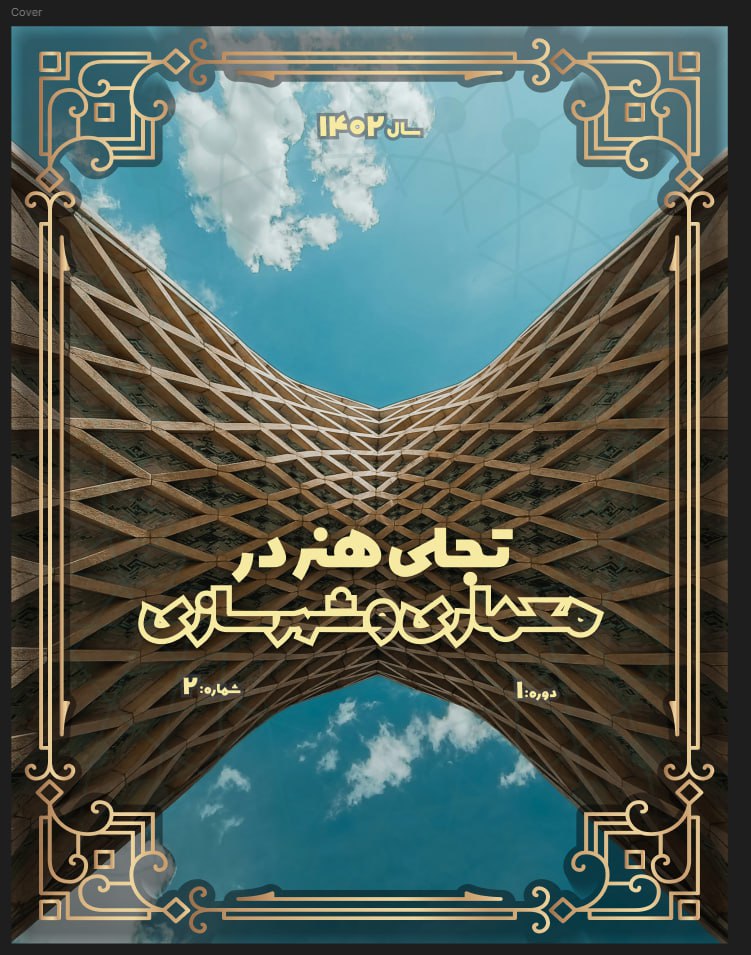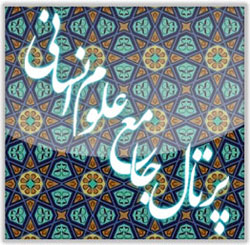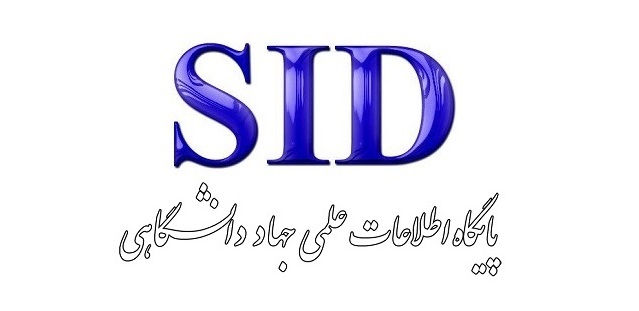واکاوی تأثیرات عوامل کالبدی در شکلگیری مکان سوم؛ مطالعهی تطبیقی بازار تاریخی و مجتمع تجاری لالهپارک تبریز
کلمات کلیدی:
مکان سوم, عوامل کالبدی, مدلسازی معادلات ساختاری, بازار تاریخی, مجتمع تجاری لالهپارک, تحلیل همبستگی, فضای اجتماعپذیرچکیده
هدف پژوهش، بررسی نقش و تأثیر عوامل کالبدی شامل معماری فضا، گستردگی و هارمونی، اصول زیباشناسی، عملکرد فضایی و ابعاد اجتماعی در شکلگیری مکان سوم با تأکید بر مطالعهی تطبیقی بازار تاریخی و مجتمع تجاری لالهپارک تبریز است. این پژوهش توصیفی–همبستگی بوده و جامعهی آماری آن شامل کلیهی بازدیدکنندگان غیرشاغل محوطهی کافهها و رستورانهای دو فضای یادشده است. نمونهای متشکل از ۴۰۰ نفر (۲۰۰ نفر از هر مکان) به روش نمونهگیری غیرتصادفی در دسترس انتخاب شد. دادهها با پرسشنامهی محققساخته متشکل از پنج بعد کالبدی گردآوری گردید و روایی و پایایی آن از طریق تحلیل عاملی و آلفای کرونباخ تأیید شد. تحلیل دادهها با نرمافزار SmartPLS و رویکرد مدلسازی معادلات ساختاری انجام گرفت. نتایج تحلیل مدل نشان داد تمامی ابعاد کالبدی بررسیشده دارای تأثیر معنادار بر شکلگیری مکان سوم هستند (ضرایب معناداری بالاتر از 0.5). مؤلفههای معماری فضا (0.731)، گستردگی و هارمونی (0.622)، اصول زیباشناسی (0.516)، ابعاد عملکردی (0.594) و ابعاد اجتماعی (0.563) بهطور همافزا بر خلق فضایی اجتماعپذیر، دلپذیر و دارای حس تعلق مؤثرند. این نتایج تأییدکنندهی نقش کالبد فضا در ارتقای تجربهی اجتماعی و پایداری فرهنگی شهروندان است. مطالعهی حاضر بیانگر آن است که طراحی کالبدی هوشمندانه و هماهنگ میتواند مکانهایی با ویژگیهای مکان سوم خلق کند؛ مکانهایی که تعاملات اجتماعی، هویت فرهنگی و سرزندگی شهری را تقویت میکنند. پیشنهاد میشود در طراحی و مدیریت فضاهای عمومی شهری، پیوند میان عوامل کالبدی و اجتماعی بهطور نظاممند مدنظر قرار گیرد.
دانلودها
مراجع
1. Klinenberg E. Palaces for the People: How Social Infrastructure Can Help Fight Inequality, Polarization, and the Decline of Civic Life: Crown Publishing; 2018.
2. Nouri M. Explaining the Experience of the Transformation of Oldenburg's Third Place in the 21st Century: An Exploration into the Interaction Between the Virtual World and the Real World in the Context of Citizens' Leisure. Suffeh Journal. 2019;29(3):57-82.
3. Williams SA, Hipp JR. How great and how good? Third places, neighborinteraction, and cohesion in the neighborhood context. Journal of Social Science Research. 2019;77:68-78.
4. Littman DM. Third places, social capital, and sense of community as mechanisms of adaptive responding for young people who experience social marginalization. American Journal of Community Psychology. 2022;69(3-4):436-50.
5. Al-Shami HW, Al-Alwan HA, Abdulkareem TA. Cultural sustainability in urban third places: Assessing the impact of'Co-operation in Science and Technology'in cultural third places. Ain Shams Engineering Journal. 2024;15(3):102465.
6. Ramzani M, Ghareh Beglou M, Molayi A. The Role of Third Places in Promoting Citizens' Sense of Belonging. Case Study: Valiasr Square to Valiasr Street Crossroads, Tehran. Rahpuyeh Architecture and Urban Planning Quarterly. 2022;1(2):61-76.
7. Valenzuela-Levi N, Fuentes L, Ramirez Ml, Rodriguez S, Señoret A. Urban sustainability and perceived satisfaction in neoliberal cities. Journal of Cities. 2022;126:103647.
8. Carmona M. Public places urban spaces: The dimensions of urban design: Routledge; 2021.
9. Davino C, Gherghi MSS, Vistocco D. Measuring social vulnerability in an urban space through multivariate methods and models. Social indicators research. 2021;157(3):1179-201.
10. Montgomery J. Community strengthening through urban sociability. Urban Cultures Ltd.; 2006.
11. Sandelands LE. Thinking about social life. Lanham, MD: University Press of America, Inc.; 2003.
12. Gehl J. Cities for People: Island Press; 2010.
13. Carmona M, Tiesdell S, Heath T, Oc T. Public Places - Urban Spaces: The Dimensions of Urban Design: Routledge; 2010.
14. Zevi B. How to Look at Architecture. Translated by Farideh German ed. Tehran: Shahidi; 2008.
15. Ching FD. Architecture: Form, space, and order: John Wiley & Sons; 2023.
16. Falahat MS, Samad S. The Role of the Solid-Void Concept in Explaining Architectural Place. Bagh-e Nazar Journal. 2015(35):27-38.
17. Gehl J. Life Between Buildings. Translated by Shima Shasti. 1st ed. Tehran: University Jihad; 2008.
18. Habibi SM. Civil Society and Urban Life. Journal of Fine Arts. 2008;7.
19. Golkar K. The Creation of Sustainable Place. Tehran: Shahid Beheshti University; 2012.
20. Hou N, Nishina D, Sugita S, Jiang R, Kindaichi S, Oishi H, et al. Virtual reality space in architectural design education: Learning effect of scale feeling. Building and Environment. 2024;248:111060.
21. Zhong W, Schroeder T, Bekkering J. Designing with nature: Advancing three-dimensional green spaces in architecture through frameworks for biophilic design and sustainability. Frontiers of Architectural Research. 2023;12(4):732-53.
22. Najah FT, Abdullah SFK, Abdulkareem TA. Urban land use changes: Effect of green urban spaces transformation on urban heat islands in Baghdad. Alexandria Engineering Journal. 2023;66:555-71.
23. Daneshpour SS. An Analysis of Physical Factors Affecting the Sense of Belonging to Place in the Old Center of Sabzevar City. Scientific-Research Quarterly of Urban Research and Planning. 2018;9(33):125-36.
24. Abedini S, Hasanloui. Urban Third Places; A Scene for Creating Social and Recreational Hangouts for the Community: A Comparative Study of Cafés in Districts 1 and 4 of Urmia City. Urban Planning Knowledge. 2021;5(2):153-70.
25. Asgari A. A Comparison of the Mental Model of Architects and Users to Increase Sense of Belonging to Place in Social Commercial Spaces. Case Studies: The Café-Restaurant Areas of Royal and Golestan Complexes in Shahrak-e Gharb, Tehran. Armanshahr Architecture and Urban Planning. 2023;16(42):135-44.
26. Dolatyarian K, Yazdani G, Ghafari Gilandeh A, Nazmfar. Worship-Cultural Places as a Third Place: Explaining the Role of Mosques in the Social Sustainability of Khorramabad City. Space Planning and Geomatics. 2023;27(4):103-30.
27. Behzadfar M, Tahmasbi A. Identifying and Evaluating Influential Components on Social Interactions. Bagh-e Nazar Journal. 2013(22).
28. Davoudi A, Modiri A. Assessing the Dispersion of Third Places in Relation to Various Socioeconomic Classes in Zanjan City. Urban Studies. 2015;4(16):81-92.
29. Ziyari K, Nezami M, Pour Ahmad A. The Role of Third Places in the Social Dimension of Urban Areas. Case Study: Open-Air Cafes in District 2 of Tehran. Quarterly Journal of Urban and Regional Development Planning. 2018.
30. Qashqaei R. Assessing the Sense of Belonging to Place Based on Physical and Environmental Factors in Urban Coasts. Case Study: Bushehr Coast. 2016.
31. Shojaei D, Partovi P. Effective Factors for Creating and Promoting Sociability in Public Spaces with Different Scales of Tehran City (Case Study: Public Spaces of Two Neighborhoods and One District in District 7 of Tehran). Bagh-e Nazar Journal. 2015;12(34):93-108.
32. Chena ZB, Dong Q, Pei, Zhan Z. The impacts of urban vitality and urban density on innovation: Evidence from China's Greater Bay Area. Habitat International. 2022.
33. Khoshnam A. Phenomenology of Place in the Student Lifeworld (Case Study: Undergraduate Students of the University of Tehran). Iranian Journal of Higher Education. 2021;13(1):62-99.
34. Karami E, Basiri Z, Zeinali A. Analyzing Place Attachment and its Dependent Variables in Urban Third Places (Case Study: Eyl Goli Park, Tabriz). Urban Planning Geography Research. 2021;9(3):735-59.
35. Behzadfar M. Identity of the City: A Look at the Identity of Tehran City. Tehran: Shahr Publications; 2008.
36. Partovi P. Phenomenology of Place. Tehran: Iranian Academy of the Arts; 2008.
37. Roushandel N, Soltani Fard H, Abbaszadeh S, Salmani Moghadam M. Analyzing the Dimensions of Environmental Quality Affecting the Presence of Commercial Spaces. Case Study: Rahnamayi Commercial Street, Mashhad. Urban and Regional Studies and Research. 2016;8(28):71-92.
38. Nasehi SGRS, Khadem al-Hosseini A. Urban Third Places and Social Sustainability of Neighborhoods in Isfahan City. Quarterly Journal of Future Cities Outlook. 2022;3(2):95-111.
39. Mohammadi, Rafiei B. Identifying Factors Affecting the Sense of Place Belonging of New City Residents with an Emphasis on Place Models and Its Evaluation in Andisheh New City. Welfare Planning and Social Development. 2021;12(48):187-229.
40. Dibazar T, Jamali, Valizadeh. The Impact of the General Characteristics of Third Places on Social Interactions; Case Study: Cafés in Tabriz City. Quarterly Journal of Urban Studies. 2021;10(39):29-40.
41. Gehl J. The Human City. Translated by Ali Ghafari & Leila Ghafari. 1st ed: Royal Architecture Science Institute; 2013.
42. Golkar K. An Exploration into the Definition of Urban Design: Center for Urban and Architectural Studies and Research of Iran, Tehran; 2008.
43. Hadidi Masouleh N. Placemaking and the Third Place: The Social Function of the Public Space in the Sagharisazan Design Axis, Rasht: Isfahan University of Art; 2012.
44. Behzadfar M, Jalili Sadrabad S, Jalili Sadrabad S. Lighting of Urban Public Spaces and Women's Presence; Case Study: Saei Park, Tehran. Armanshahr Architecture and Urban Planning. 2013;7:93-100.
45. Shakour, Abdollahzadeh F, Khorshidi. The Role of Physical Structure in the Formation of Social Cohesion in Urban Neighborhoods (Case Study: Ghasr-e Dasht Neighborhood, Shiraz). Scientific-Research Quarterly of Urban Research and Planning. 2018;9(33):85-96.
46. Gehl J. Public spaces, public life. Copenhagen: Danish architectural press; 2004.
47. Rahmani, Rafieepour. The Coffee Shop as a Peace-Oriented Place (Rethinking the System of Semantic Relations of the Coffee Shop). Applied Sociology. 2022;33(2):137-62.
48. Yuan J, Liu M, Tian F, Liu S. Visual analysis of neural architecture spaces for summarizing design principles. IEEE Transactions on Visualization and Computer Graphics. 2022;29(1):288-98.
49. Lashkari G, Nouri A. Explaining and Measuring the Influential Aspects on Place Attachment in Children's Creativity Centers (Case Study: Children Aged 6 to 10 Residing in Shahrak-e Gharb Neighborhood, Tehran). Design and Planning in Architecture and Urban Planning. 2023;1(1):3-19.
50. Mills KG, Han FX, Zhang J, Changiz Rezaei SS, Chudak F, Lu W, et al., editors. Profiling neural blocks and design spaces for mobile neural architecture search. Proceedings of the 30th ACM International Conference on Information & Knowledge Management; 2021.
51. Li H, Wu G, Zheng WS, editors. Combined depth space based architecture search for person re-identification. Proceedings of the IEEE/CVF conference on computer vision and pattern recognition; 2021.
دانلود
چاپ شده
ارسال
بازنگری
پذیرش
شماره
نوع مقاله
مجوز
حق نشر 2025 Sepideh Rafiei (Author); Shabnam Akbarinamdar

این پروژه تحت مجوز بین المللی Creative Commons Attribution-NonCommercial 4.0 می باشد.









